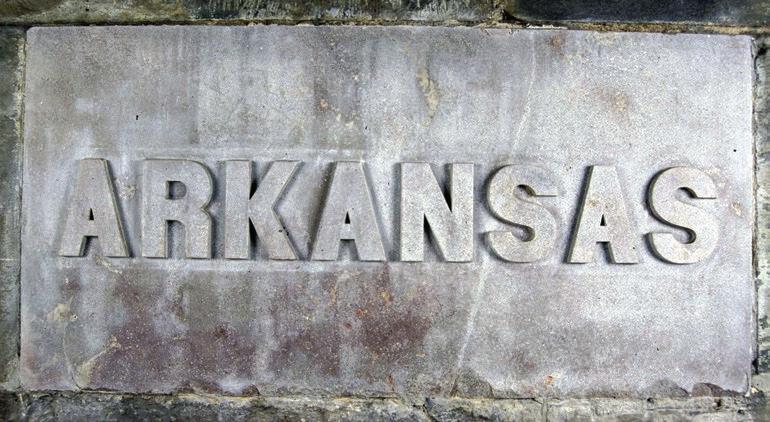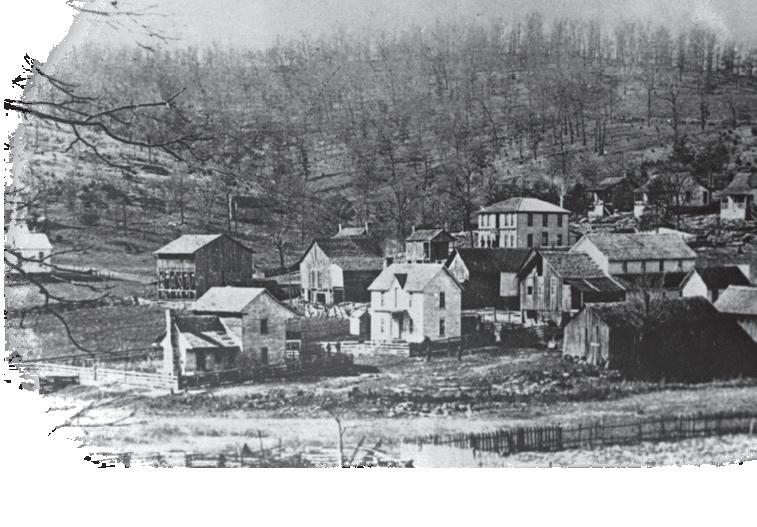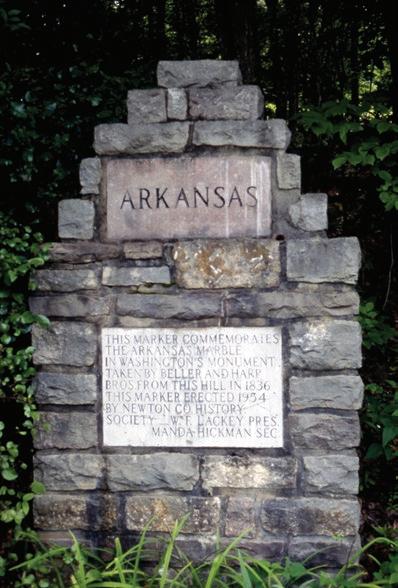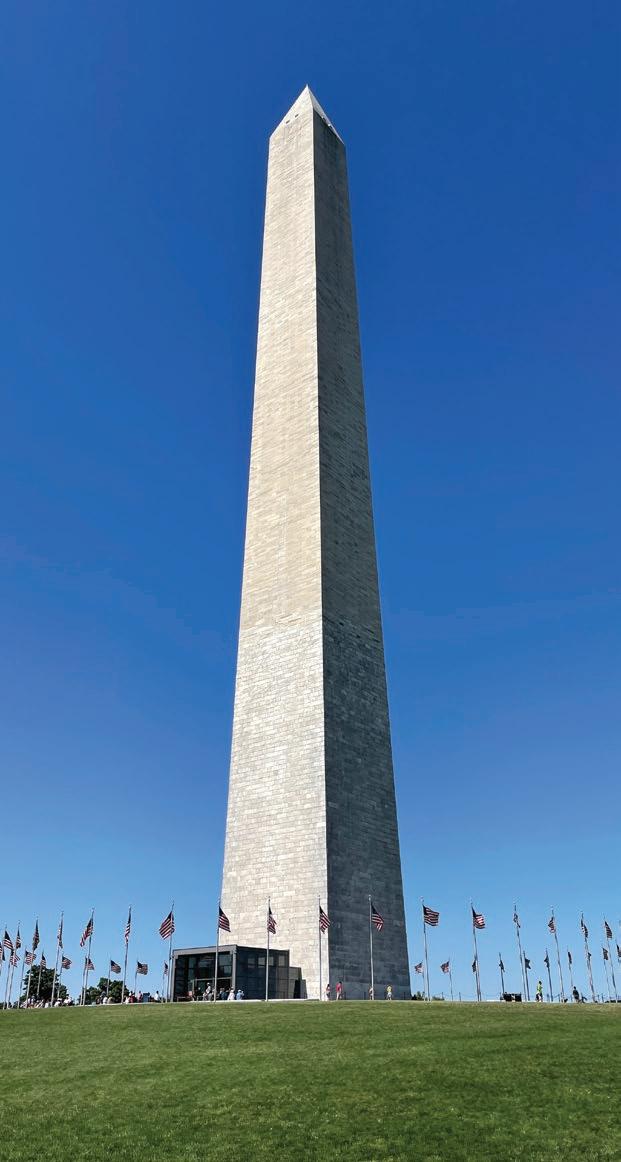
2 minute read
Humble Ozark Stone Transformed into National Rock Star
The announcement sent Arkansans buzzing. For years, local newspapers published progress reports from way up yonder about the Washington National Monument Society's plans to build a structure in the nation’s capital in tribute to the first U.S. president. In 1849, the news became more interesting. Arkansas, along with the nation’s other 29 states, was invited to provide a block of stone with its name clearly engraved on it to be laid within the walls of the National Monument.

Peter Beller and brothers William, Samuel and Elijah Harp, who all lived in what is now the Marble Falls community between Harrison and Jasper in Newton County, secured a contract to produce the requested 2-by-4-foot stone. A block, reported then to be marble, was broken loose from a mountain. Power tools were only a fantasy as the men hand-drilled and wedged the stone into shape in the presence of onlookers, who dealt a barrage of unsolicited advice and comments, perhaps because the block was simple in design.
With no forklifts, bulldozers or tractor-trailer rigs, the next task was moving the ton-heavy block. It was somehow heaved atop a sledge and dragged by a team of oxen through 60 miles of rugged Ozark terrain. Different accounts place it arriving at
Clarksville, near the Arkansas River, as well as Van Buren. Needless to say, the unsolicited critiques of the stone’s workmanship continued in the Van Buren newspaper.
"The best judges pronounce the marble of a superior quality, although the workmanship and polish may not compete with marble finished in the older states," a journalist with no byline wrote. The stone was then placed on the P. Pennywit steamboat, which headed to New Orleans, and was then transferred to a sailboat that carried it to the Potomac River basin for its arrival to Washington D.C. The block can be viewed on the 30-foot level of the monument by ascending the structure’s staircase.
A few years later, the city of Little Rock and the Masonic Grand Lodge of Arkansas each contributed stones to the monument. But the one from Newton County was Arkansas’ first, and motorists can find a slight likeness to Arkansas’ first block in the Washington Monument on a marker placed by the Newton County Historical Society on Arkansas Highway 7 near Marble Falls.

And is the stone marble? Apparently not. The National Park Service, which oversees the Washington Monument, lists it as being …limestone.

Perfecting a solid upper cut and working on fast footwork may seem like unusual ways for seniors to stay fit, but boxing for exercise is a proven option for strengthening and conditioning the entire body at any age. When taught in a group setting, participants throw lots of air punches – combined with bodyweight exercises and a bit of speed training – and the results are both fun and effective.
The Village’s Well-Being Program strives to stay fresh and inspiring for people at all fitness levels, and the already dynamic class lineup has a knockout addition in the form of Butterfield Boxing sessions. University of Arkansas’ highly trained and enormously respected Dr. Ed Mink has joined the fitness team to teach these brand-new classes.






